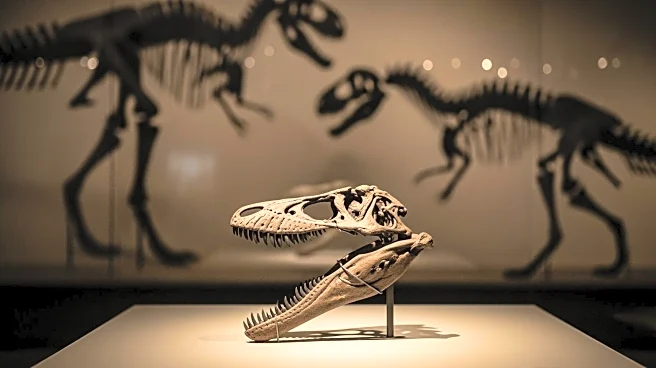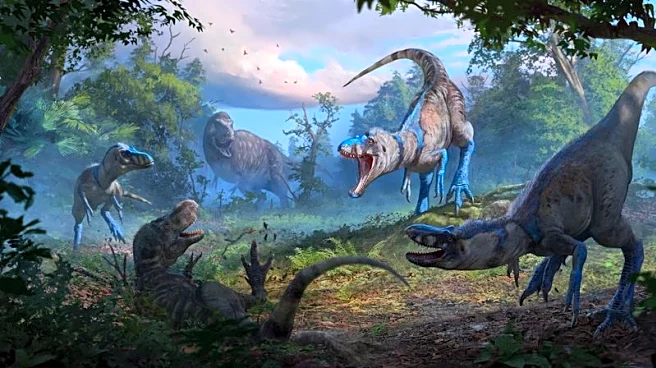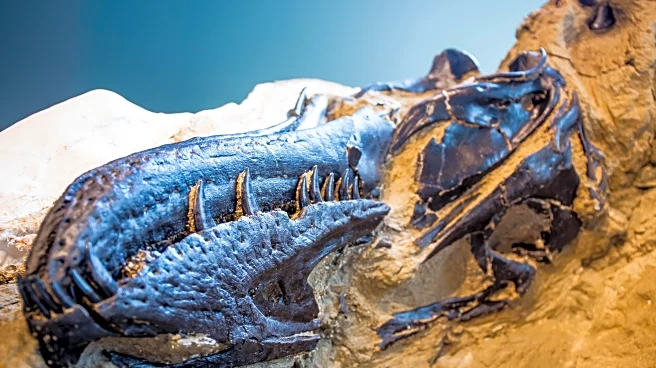What's Happening?
A new study published in Nature has settled a long-standing debate in paleontology by confirming that Nanotyrannus is a distinct species from Tyrannosaurus rex. The research analyzed a remarkably complete tyrannosaur specimen from Montana, revealing fine
differences in the bones and evidence that the fossil was a mature adult. This discovery challenges previous assumptions that Nanotyrannus fossils were juvenile T. rex specimens and suggests a more diverse picture of late Cretaceous predators.
Why It's Important?
The confirmation of Nanotyrannus as a separate species from T. rex has significant implications for the field of paleontology, as it necessitates a reassessment of tyrannosaur classification and evolution. This discovery enriches our understanding of dinosaur diversity and interactions during the late Cretaceous period. It also highlights the importance of revisiting and reanalyzing existing fossils to uncover new insights. The study may influence future research directions and educational content related to dinosaur evolution.
Beyond the Headlines
The study challenges long-held beliefs in the paleontological community and underscores the dynamic nature of scientific inquiry. It demonstrates how new evidence can reshape our understanding of historical species and their ecosystems. The discovery of Nanotyrannus as a distinct species may lead to further exploration of its ecological role and interactions with other dinosaurs. This development also emphasizes the importance of preserving and studying fossils to advance scientific knowledge.

















